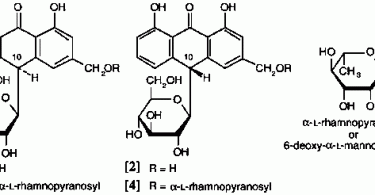MAGNESIUM GROUP, A BRIEF CASE STUDY
KIRTIKA SINGH, MIRNALINI CHAUHAN
BHMS, Jayoti Vidhayapeeth Women’s University, JAIPUR.
ABSTRACT
Magnesium is fourth most abundant cation in the body. It performs several enzymatic reactions. Many studies reported that reduced level of magnesium in body can lead to cause wide range of chronic diseases. Magnesium plays important role in therapeutic and preventive approach for several diseases such as diabetes, osteoporosis, bronchial asthma, preeclampsia, migraine, and cardiovascular diseases.
KEYWORDS: Magnesium, Diseases, Homoeopathy, Human Body, Study.
INTRODUCTION
Magnesium (Mg2+) has several functions in the human body. Magnesium is worthy of being marveled at world’s lightest structural metal, highly active in its pure state.Magnesium is an element, found in upper earth surface in great amounts, chiefly as the carbonate alone as the magnesite and together with calcium carbonate as dolomite. Magnesium is present in every living cell especially in muscles and nervous tissues and in cerebral spinal fluid as well as serum. In this brief study, the magnesium cycle in human body, its deficiency, its causes, disease associated with low and high magnesium in body and the role of magnesium in homoeopathy, its approach on treating with homoeopathy will be discussed.
Read More About: Microsoft azure certification test
REVIEW OF LITRATURE
Originally, it was first isolated in 1808 by Sir Humphry Davy, who evaporated the mercury from magnesium amalgam made by electrolyzing mixture of moist magnesia and mercuric oxide. The name Magnesium came from Magnesia. It is essential to all living cells as Mg2+ ion is involved with critically important biological polyphosphate compound DNA, RNA, and ATP. Many enzymes depends on magnesium for their functioning.
Nomenclature:
i. Latin : Magnesium
ii. German: Magnesium-R
iii. Symbol: Mg
iv. Group: II A
v. Series: IIIrd
vi. Atomic Number : 12
vii. Atomic Weight: 24.305amu
Physical properties:
Magnesium is a salt, Density: 1.74g/cm3
It is odourless, Melting point: 651*C
Tasteless, Boiling point: 1107*C
Insoluble in alcohol but soluble in dilute acids Specific heat:0.246
General use:
• In organic chemistry, it is used as an intermediate for introduction of new radicals.
• Mg was used as Gregory’s Powder which is used to sweeten the stomach.
• It is used as laxative, antacids.
• It is used as purgative medicines.
• In transportation, tooling, material handling, consumers goods, and most importantly Alloy making.
• It has high affinity to oxygen and hence is in great demand as a reducing agent.
Distribution in the body:
• In the serum :2-4%
• Responsible for the germination.
• Sperms are rich in Mg and stimulate sexual function.
• Brain, muscles and testes are rich in Mg.
• Bones: 1.5 % of Mg
• Muscles: 21 Mg /10gm.
• Blood plasma: 1.8-2.4 m eq./l
• Blood cells: 5.4-7.8 m eq./l
Site of absorption: small intestine and little from large intestine.
Daily requirements: women: 300 mg/day; men: 350mg/day.
Food source: green leafy vegetables – spinach, nuts- cashew, almonds, beans,soya beans,pumpkin seeds;whole grain buck wheat flour, barley; fish; low-fat vanilla; yoghurt.
Excretion: it is excreted from urine and feaces.
Deficiency: causes: mg deficiency occurs due to excessive loss of mg in urine, gastrointestinal systemdisorders that cause loss of mg or limit mgabsorption, or a chronically low intake of mg.
Sign &symptoms:
GIT – loss of appetite, nausea and vomiting.
CVS – irregular heartbeat, palpitation andhypertension.
Kidney – kidney stones
Nervous system- disorientation, tiredness, difficulty in concentration, sleep disorders, confusion, irritability.
Excess: causes- mostly associated with kidney failure, large doses of laxative and antacids causes it.
Sign & symptoms:nausea,loss of appetite &muscle weakness,low blood pressure & irregular heartbeat.
Important remedies
Magnesium carbonicum
Magnesium muriaticum
Magnesium phosphoricum
Magnesium sulphuricum
Magnesium fluricum
Magnesium iodatum
Magnesium bromatum
Magnesium aceticum
Magnesium borocitricum
Magnesium usta
Magnesium silicatum
Theme of Magnesium group
• There is need of support, dependence & desire for security.
• Magnesium has strong feeling of an orphan.
• Magnesium insecurity is due to the unpleasant childhood may be because of parental quarrels,parental separation, low attention by parents, magnesium children has feeling of being rejected so he has emotional insecurity.
• Many times magnesium patient’s emotions are such that the patient himself unaware of his emotions.
• They feel internal anxiety, & the cause is not explained by the patients
• Their history of being neglected by parents creates a feeling of being unwanted though they are self-confident, have strong sense ofduty, taking care for others.
• The feeling of forsaken is very strong.
• Patient can sit with composed face and honestly say that they have no tension.
Constitution: Stout, Fair & Flabby. Skin is Pale, Puffy, Oily& Waxy with slow healing and scar formation.
Temperament: Nervous
Thermal relation: Chilly, very sensitive to cold.
Miasm: Sycotic
Sphere of action :All magnesium mainly acts on gastro-intestinal tract, sexual organs esp. uterus, nervous system, muscles, liver, nails, prostate etc.It shows more affinity to right sided affections.
Pathophysiology : Its injections reduce the body temperature. Its significance best known in green plants especially in organic form in chlorophyll.
Heart- It slows the rate of impulse formation at sino-atrial node.
G.I.T.- it slows emptying, but increases the gastric secretions.
Nervous system- these ions are a depressants of CNS & neuromuscular transmission.
Uterus- Shows dependence of the pain at menstrual period uponthe variation of Mg content in the blood.
Skin- useful in skin warts, papilloma, polyps, tumors etc.
Mental Generals:
• Repression.
• Insecure feeling.
• Dreams of dangers, robbers, loneliness.
• Themes of being left behind on a railway platform & the train departed with all relatives while the patient was left behind.
• Panic with relatives, meeting friends, being with relatives who are actually dead.
• Neglected feeling.
• Hate aggression in any form.
• Pacifism is the key-note.
Physical Generals:
• Right-sided affection.
• Chilly; all complaints < by cold.
• Marked periodicity.
• Slow metabolic action.
• Poor resistance; lack of vitality; increased susceptibility – leading to allergic manifestations.
• Affinity to nervous system – leading to narcotic manifestations.
• Tendency to new growth.
• Mainly psoric & sycotic predominant.
• Desire for meat, vegetables and refreshing things.
• Aversion to cooked food, sweets, fatty things.
• Milk intolerance.
• All the discharges are sour, profuse & foul.
• Menses very dark – like tar; many complaints are excited or aggravated in relation with mense.
• Sensitive both mentally & physically; especially suited to children & women; worn-out constitution and chilly patients.
• Pains- neuralgic pain; darting, tearing, boring & shooting.
• Sleep-unrefreshing sleep; more tired in the evening.
• Stool- green, watery & with mucus.
General Modalities are, aggravation- by cold, touch, 7a.m., right side & movements.
amelioration- warm applications, pressure & bending double.
DISCUSSION
Classical case study from journal on magnesium group remedies
A woman of 20 is very gloomy. She cannot bring herself to do anything, she feels herself tired of everything very quickly. She experiences life as pointless. She has been taken this for one and half a year since she ended her relationship with his boyfriend, she did not knew the reason for doing that but she felt somewhere suffocated and demanded too much for her.
Two years ago her father died. She had a love-hate relation with him. Her parents were divorced when she was 5 yrs old. She did not want to see her father anymore since age of 12 to 16. She had the feeling that her father saw her as daughter of her ex-wife and not as a real person. He thought she had affected mannerism like her mother.
Her mother was having severe mental problems regularly she to visit and spend time in psychiatric hospital and her mother’s “schizophrenia” started when she was 1 yr old.
So patient was very concerned about the idea of schizophrenia, she was afraid that it might be hereditary.
She has complaints of Back pain and neck pain, vertigo with feeling of fainting and a light feeling in her head, nausea when she gets worked up about something, restlessness.
General characteristics are;
Headache rain, >sea, she cannot tolerate heat it, makes her very tired.
Perspiration: little.
Time: <morning, remains moody for 2 hours, deep inside says ‘no’.
Desires: spicy, chocolate, salt, tobacco, alcohol.
Aversion: thyme, fish, coffee.
Nausea after coffee. Gloomy after smoking and alcohol.
Menses: stomach crams often and pain in her calves, day before menses she is bad tempered and cleaning the house.
Sleep: unrefreshed, sleeps on her stomach.
Mind: she has lot of will power and when she wants something she achieves it .irritable, keeps things to herself mostly, difficult for others, story teller, mostly irritated by her mother.
Attention makes her panic all time.
Dreams : of dying, corpses, water.
Hobbies: photography, learning things.
Analysis and prescription for the case: As she is child of divorced parents and her desire aversion as well good indicated and first choice is Magnesium Muriaticum.
CONCLUSION
In magnesia, anxiety and fears which are mostly deep seated and expressed in dreams or various types. Abandonment, Repression, Rejection, Periodic symptoms, Self-pity, deep seated grief, sticks to past even when present is very right and easy going. In homoeopathy magnesium covers most of diseases and deficiencies and treated on basis individual’s personality. Magnesium proves great help in curing the patients.
BIBLIOGRAPHY :
1. Weast, Robert. CRC, Handbook of Chemistry and Physics. Boca Raton, Florida: Chemical Rubber Company Publishing;1984. pp. E110
2. Vithoulkas George. Essence of Materia Medica. NewDelhi:B Jain publishers; 2002.
3. Boericke W. New manual of Homoeopathic Materia Medica. 9th Ed.New Delhi: B Jain publishers;2010.
4. Clarke JH. Dictionary of Practical Materia Medica. New Delhi: B Jain publishers;1990.
5. Clarke JH. Condensed Materia Medica & Repertory. New Delhi: B Jain publishers; 1991.
6. Hering C. Guiding Symptoms of Our Materia Medica. New Delhi: B Jain publishers; 1877.
7. Banergea SK. Miasmatic Diagnosis. New Delhi: B Jain publishers; 2003.
8. https://www.hindawi.com/journals/scientifica/2017/4179326/ The importance of magnesium in clinical health care.
9. https://doi.org/10.1155/2018/9041694 Magnesium and human health: perspective and research direction.
10. https://journals.plos.org/plosone/article?id=10.1371/journal.pone.0180067 role of magnesium supplementation in the treatment of depression: a randomized clinical trial.
11. https://en.wikipedia.org/wiki/Magnesium
12. https://homeopathic.com/product/homeopathy-and-minerals-2/





